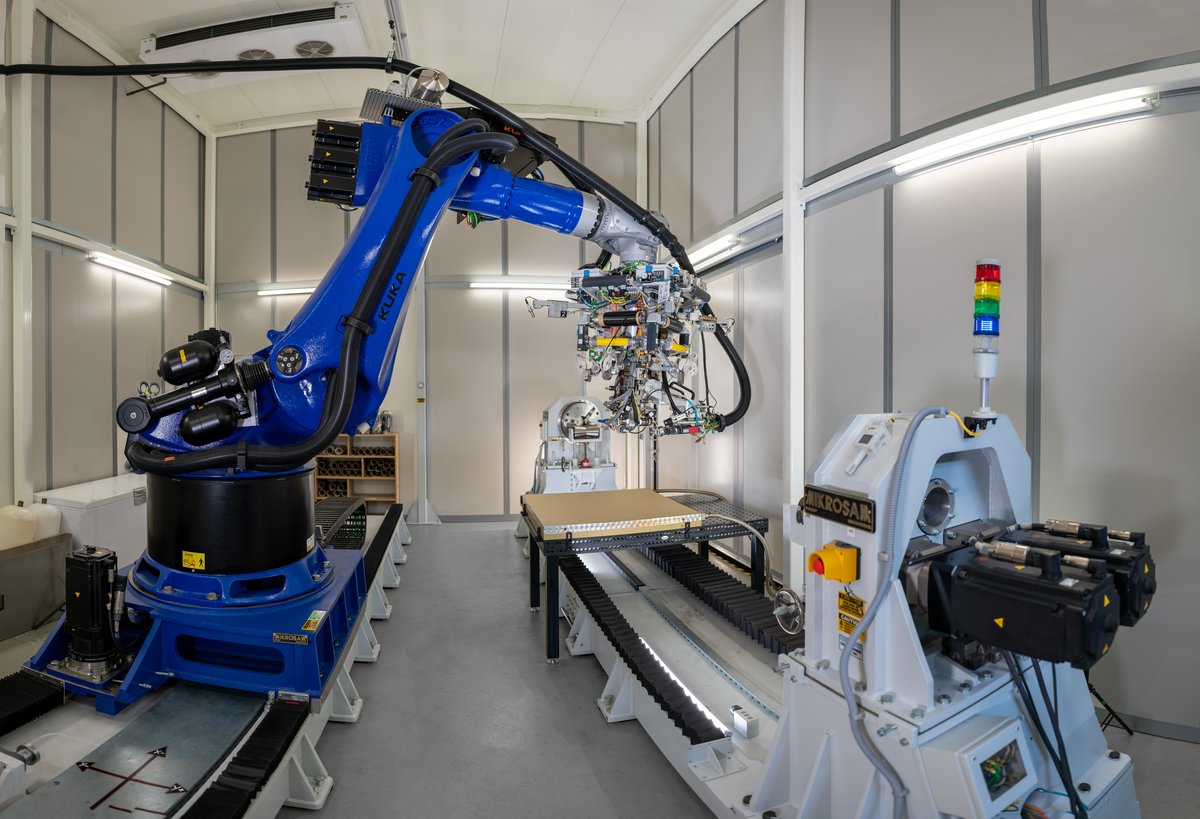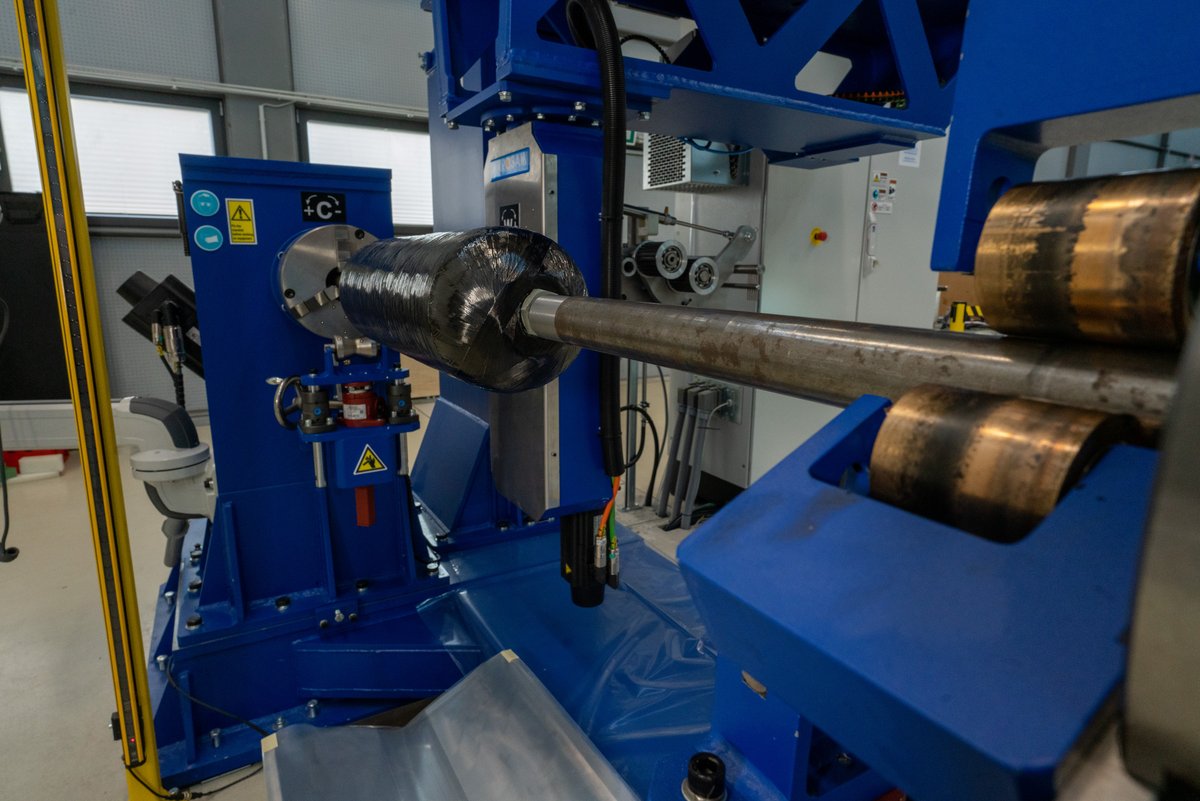The future of storage and transport infrastructure for green hydrogen
Only a suitable transport infrastructure will ensure a successful hydrogen economy. So how can volatile hydrogen molecules be stored and transported on ships, rails and roads? Alternative storage and transport options for gaseous hydrogen must be investigated in order to supply customers without a connection to a water supply pipeline network.
The spherical shape of high-pressure containers - compared to the conventional cylindrical shape - should reduce the load on their outer shell. This means that in the future they could be transported by ship, train or truck. The aim of the Mukran project is to implement and demonstrate the entire process chain from container development and prototype construction to a mobile storage system suitable for road, rail and ship transport.
To this end, the Fraunhofer Institute for Applied Polymer Research IAP, Research Unit Polymaterials and Composites PYCO, and the Brandenburg University of Technology Cottbus-Senftenberg (BTU), Department of Polymer-Based Lightweight Construction, headed by Prof. Dr.-Ing. Holger Seidlitz, are developing two spherical storage tanks with different material compositions: one variant made of various steel alloys and another with a steel interior and a load-bearing outer shell made of high-strength carbon fiber-reinforced plastic. Through this choice of materials, the researchers hope to achieve cost savings that will make the spherical storage units competitive, as well as greater durability and improved recyclability. To make the new hydrogen storage systems mobile, they are now to be installed in standardized container formats. This requires the development of a frame that keeps the spherical storage units stable in the container during transport. In addition, solutions for filling and removing the gaseous hydrogen must be found and tested.
The entire project is being funded by the German Federal Ministry of Education and Research (BMBF) with around 19 million euros and is part of the TransHyDE lead project. The project partners are the Gas- und Wärme-Institut Essen e.V. (GWI), the Brandenburg University of Technology Cottbus-Senftenberg (BTU), the Fraunhofer Institute for Applied Polymer Research (IAP), the port operator Mukran Port (Fährhafen Sassnitz GmbH), Hamburger Hafen und Logistik AG (HHLA) and the independent consultancy cruh21 GmbH.
Future-oriented work is important to the project team:
"For the achievement of climate protection goals, the supply of hydrogen is an important building block. In order to ensure a nationwide supply, it is important to distribute the hydrogen decentrally within Germany. The logistics and transport options for gaseous hydrogen that are possible and sensible in this context are being investigated at the GWI as part of the project." Janina Senner, PtX team leader at Gas- und Wärme-Institut Essen e.V.
"Both to achieve climate protection goals and to expand the independence of the German energy market, the expansion of renewable energies and storage as green hydrogen is a basic prerequisite. To this end, the BTU's Department of Polymer-Based Lightweight Construction is working with project partners to develop two types of high-pressure tanks. The inherent masses of the tanks are reduced through novel manufacturing technologies, the optimization of process sequences and the use of high-performance materials." (Univ.-Prof. Dr.-Ing. Holger Seidlitz, Head of the Department of Polymer-Based Lightweight Construction and Acting Head of the Chair of Joining and Welding Technology at BTU and Head of the PYCO research area at Fraunhofer IAP).
"For the BTU Cottbus-Senftenberg, the TransHyDE project is an important building block for the development and expansion of research expertise in the handling of hydrogen and the technologies required for this. Research and development for future hydrogen supply in both the industrial and private sectors plays a central role in Brandenburg. The research in this project will certainly have a significant impact on the future distribution of this important, future-oriented energy carrier. (Prof. Dr.-Ing. habil. Michael Hübner, BTU's full-time vice president for research and transfer).
"The hydrogen economy is a central building block in the transformation of the energy sector. High-pressure tanks are ideal for storing the gas while using a small amount of inherent energy. As part of the lead project TransHyDE, spherical CFRP-reinforced tanks are being designed at Fraunhofer IAP, the layer structure optimized and a monitoring system implemented. Thus, a safe storage solution with a high payload ratio will be provided to the industry by Fraunhofer IAP and the project partners" (Prof. Dr. rer. nat. Christian Dreyer, Deputy Head of Research Area PYCO at Fraunhofer IAP and Head of the Professorship Fiber Composite Material Technologies at TH Wildau).
"By participating in the Mukran implementation project, HHLA is pursuing the goal of developing sustainable and economical solutions for the transport of hydrogen. By optimizing the process chain for the storage and transport of gaseous hydrogen, the supply costs of green hydrogen are to be significantly reduced to enable value-added use." (Georg Böttner, Project Manager and Hydrogen Coordinator at HHLA).
"Participation in the TransHyDE consortium enables research and industry to work together to drive the implementation process of new technologies forward in a targeted and time-effective manner. Only in this way can everyone make a contribution to climate protection and at the same time advance the economy in Germany." (Claudia Martens, Marketing & Development Industries of the Sassnitz Ferry Port, Mukran Port).
"TransHyDE combines the strengths of research and industry, for a sustainable decarbonization of Germany as a business location. Here, cruh21 contributes its skills in knowledge transfer as well as interface communication. My wish for the TransHyDE consortium is an interdisciplinary cooperation at eye level." (Artur Flaum, cruh21)
About the hydrogen lead projects
The hydrogen lead projects form the largest research initiative to date of the German Federal Ministry of Education and Research (BMBF) on the topic of energy transition. In the industry-led flagship projects, industry and science are jointly developing solutions for the German hydrogen economy: series production of large-scale electrolysers (H2Giga), production of hydrogen at sea (H2Mare), technologies for the transport of hydrogen (TransHyDE).
The lead project TransHyDE develops, evaluates and tests hydrogen transport solutions. A hydrogen economy cannot function without a suitable transport infrastructure, so four transport technologies are to be advanced in demonstration projects: (1) hydrogen transport in high-pressure vessels, (2) hydrogen-liquid transport, (3) hydrogen transport in existing and new gas pipelines, and (4) transport of hydrogen bound in ammonia or the carrier medium LOHC. More information is available on the BMBF website at www.wasserstoff-leitprojekte.de/leitprojekte/transhyde.
Specialist contact
Polymerbasierter Leichtbau
T +49 (0) 355 69-5001
Holger.Seidlitz(at)b-tu.de


